Resources

I was flailing. I was trying to show my students the different features of the videoconferencing tool Zoom that we’d be using synchronously for the rest of the semester, but I didn’t know how to share my computer screen in such a way that would show Zoom itself. Zoom kept hiding. It was our first day back, and I was feeling frustrated and flummoxed. It was not my best moment as a teacher. Or was it? Many of you may be familiar with the work of Carol Dweck. In her book and professional talks posted online (like this one or this one), she describes two types of mindsets: fixed and growth. A fixed mindset means that students believe their qualities, like intelligence, are innate, unmalleable, carved in stone. I get this from students a lot: “I’m just not a good writer,” as if writers come out of the womb good. (Anne Lamott has something to say about this in her brilliant essay, “Shitty First Drafts,” which I’ve assigned in every course I’ve ever taught.) I get the impression that many of my colleagues think the same about teaching: You’re either a good teacher or you aren’t. But those with a growth mindset believe that abilities can be developed over time, through practice and effort; they don’t shy away from challenges and failures because those are opportunities to grow, rather than revelations of unchangeable imperfections best left hidden. Covid-19, and all the uncertainty and upheaval resulting from its spread, is giving us an opportunity to embrace a growth mindset as educators. How can we do so? One of my approaches has been to demonstrate a spirit of curiosity and openness with my students. I had never used Zoom breakout rooms before three weeks ago, but I wanted to try them out with my newly online class. I thought these rooms could help students do the partner and group work they were used to doing face to face. So, I said, “Hey, I’m going to try something out here; let’s see what happens.” I didn’t know what would happen. We were going to find out, together, as co-learners. I remember, a couple summers ago, I was reading so many books from a certain section of the bookstore that my buddy asked me, “Are you just sitting around reading quasi-philosophical self-help books and should I be concerned?” “Yes and unclear” was my reply. One author I was fortunate to come across during this time was Brené Brown. In The Gifts of Imperfection, she introduced me to a phrase I love: “an aspiring good-enoughist.” Many of my friends are drowning right now in self-imposed perfectionism. One spent hours editing a short recorded lecture before posting it on our LMS. If perfection is our aim, however, we may shy away from the very opportunities that would stretch us and challenge us, forcing us to grow—instead opting only into narrow situations that showcase the talents, skills, and knowledge we already possess. We don’t have to be perfect to be good teachers. We don’t have the time, energy, or bandwidth anyhow. Let us all, instead, be good-enoughists. And, while we’re at it, let’s allow our students to see that’s what we’re doing; after all, they look to us as role models. When my daughter was just a baby and she would hear a loud sound—a motorcycle, a lawn mower, a fire alarm—she would look, not toward the noise itself, but up at me. She gauged how she should respond to the world by how I was responding; if I remained calm, she did too. I think it’s the same with students. If we respond to our inevitable (and they are inevitable) mistakes with histrionics or apologies, students will think something bad has happened and react accordingly. If we take our mistakes and failures in stride, and laugh them off, students just might too; they are generally pretty good sports. Failure, of this kind and on this scale, doesn’t have to be a big deal. (If nothing else, the global pandemic has given us all a sense of perspective.) Now is the time for us to model, good-naturedly, what life-long learning looks like. A final key, for me, in embracing a growth mindset, has been to show what learning after a mistake looks like. The next class session, after the Zoom debacle, I came back and shared with my students what I had discovered. After doing some quick Google searches and consulting Zoom’s very helpful tutorials, I could share my screen in such a way that Zoom itself would show. “Look!” I excitedly said. “Look! I’m doing it!” I’m not sure they were as excited as I was, but they had gotten to see my failure . . . and then they got to see the growth that resulted from it. They saw me, their professor, gain a new skill, just as I was asking them to do over the course of our time together. Humility is hard, and may seem altogether too rare, in the academy. Now is the time to embrace it. We’re all learning, we’re all growing. This pandemic is just making it more obvious.
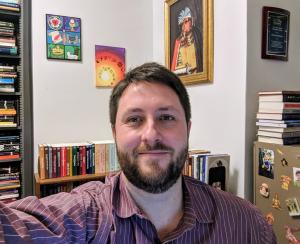
Like many parents of small children, I responded to the COVID-19 crisis by subscribing to Disney+. One of my first dives into animated nostalgia was with the Pixar short Presto, which initially preceded showings of the 2008 masterpiece WALL-E. I watched with bemused horror as the magician, resolute on performing for the packed house, ignores the obvious pleas of his rabbit for a simple carrot and experiences greater and greater injury as he tries to coerce the rabbit to do his bidding. I was glad my children were already asleep. Before long, I was thinking about how some of my own attempts at improving my instruction over the years might sadly resemble the flailing and desperation of the magician Presto. Our students are hungry, and we risk failing them–and getting hurt in the process–if we lose sight of this. They are hungry for connection, for community, for security, and yes, for learning. I want to feed their hunger, to give them the carrot that will hold them over until something more substantial is available again. But now that all our interactions have been digitized, I have found myself a bit adrift, realizing that much of my impact in the classroom depends on a persona that I perform. The shift to remote teaching and learning has forced me to reckon with my lingering assumptions about students as an audience. I have always seen myself as a lifelong learner, and a fellow-learner with my students. But now, more than ever, I have become aware that I still often treat students like an audience who has paid good money for a seat and impatiently await my magic making. But, like the animated magician who pulls off his trick only when he finally listens to his rabbit, I am realizing that in this crisis teaching and learning works best when students are full partners in the enterprise. My Presto moment might just be responsible for a lasting shift in my pedagogy toward students as collaborators, even co-conspirators. My religious studies courses serve exclusively general education students, so I cannot depend on students’ background knowledge or preexisting curiosity to energize the classroom. For students without personal connections to any religious practice or traditions, finding religious cultures interesting often depends on finding me interesting. I found in my early years as a full-time instructor that sharing my inner “history nerd” captured the imaginations of only some students. Watching a video tape of myself teaching was a formative moment in my professional development during my first semester on the job. My best attempts at good, provocative, open-ended questions fell flat, and I could see on tape how the intellectual energy I felt did not come through for the students. So I worked on conveying more excitement through energetic physicality, modeling inquiry not merely through thoughtful questions, but also through emphatic gestures and wide variations in the volume and tone of my voice. I stopped being afraid to say–loudly–“What?!” to my own attempts at interpretation. Students responded. Visits to my office hours increased. Course evaluations slowly improved. A persona that initially struck me as a farcical performance became less forced, more authentic. I am sure that I improved other skills as an instructor, but the energy I put into the performance seems to have opened up my creativity as well as my sensitivity to students. To perform in this way forced me to imagine the intellectual and emotional position of my students. It made me seem more vulnerable. It helped me make stronger connections to students. Demonstrating how willing I was to challenge myself opened up new possibilities for students to challenge me, too, and to ask potent questions about religious texts. My new instructor’s persona did not suit all pedagogical circumstances, but it became an important tool in my belt. Just as important, this new professorial habitus made me feel differently about teaching, in ways that improved my instruction in other ways, some measurable and tangible, others not. Overnight, Covid-19 took away my stage, my audience. Initial feedback suggested that nearly 1/3 of my students new quarantined lives would not accommodate a steady schedule of video conference discussions, so I opted for asynchronous approaches. Optional video office hours gave me some opportunities to speak with students face to face, but not every student would “attend” or watch the recordings. I found I could not fit all my expressiveness into a small box on a tablet screen. Discussion forums facilitate authentic discussions of our shared texts, but it becomes impossible to gauge quickly the reactions and comprehension of thirty students to a 100-word follow-up post on one thread among dozens in a forum. But I cannot, like the magician Presto, continue to perform and prestidigitate for an audience because that audience has more important things to worry about under the present circumstances. If learning is to happen now, we must be even more attentive than ever to what students need. On the one hand, this has meant above all simplifying, paring away inessential elements in order to get to the core of my objectives. I have cut down the length of reading assignments; no longer convinced that there is virtue inherent in testing students’ ability to find the important passages in a challenging text, only then to discern meaning in them. I have cut down discussion questions from four of five to one or two as students are discussing asynchronously need a focused conversation so they aren’t talking past one another. But it has also meant jettisoning performance in favor of collaboration, in and through the humble discussion forum. In other words, I have been challenged to accommodate and facilitate students’ intellectual agendas rather than skillfully molding them to my own. This means asking authentic questions, but it also means responding authentically. Without my in-person performance of classroom leadership and inquiry to subtly redirect, I have had to be more honest about when an answer is off topic and needs clarification,. Students’ links to videos or blog posts on a topic, drawn from corners of the Internet I never visit, have forced clearer and more effective conversations about evaluating sources (and about the differences between scholarly and other sorts of discourse). I have embraced the leveling effect of having my replies treated the same way as my students’ by a democratizing Moodle interface. And I have shared my genuine surprise, sadness, laughter, and joy at the insights and compassion students have expressed in plain-text prose of 100 to 250 words. In response to the crisis, I have stopped performing and started dialoging more thoroughly than before. It is an experience that I hope I will be able to translate back into face-to-face instruction, whenever that should return.
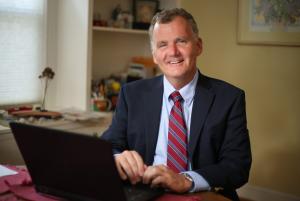
During a crisis, we need trustworthy practices. In challenging circumstances, when our bodies are anxious and tense, learners and teachers need a sturdy undergirding to navigate life as thoughts race and emotions fluctuate. At least, that is my view as a pastoral theologian. Ten years ago, Denise Dombkowski Hopkins and I published a book entitled, Grounded in the Living World: The Old Testament and Pastoral Care Practices (Eerdmans, 2010). We briefly explored the unfortunate use of platitudes in ministry; phrases such as ‘it could be worse,’ ‘she is in a better place,’ ‘look on the bright side.’ Clichés and platitudes are superficial thoughts and comments that stifle further exploration as they reduce complexity to simplicity. Proof-texting with the Bible also functions as a platitude. People are not comforted and much harm can occur through the use of these seemingly innocuous remarks. In a time of crisis, we realize how unsatisfying a platitude can be. A few weeks ago, I was interviewed for a podcast on the topic of care during a pandemic. I responded to a question about “rethinking” leadership practices by suggesting we need not “over think.” A former student and current pastor wrote saying how much he appreciated the passing reference. We need practices that can hold us together since many people are, in his words, “operating in a type of panic mode that is causing an overload to our systems.” Platitudes such as ‘this, too, shall pass,’ and ‘God is bigger than this virus’ serve as knee jerk thought responses that prematurely call the question rather than open the conversation. Recently, I was listening to recording of Joko Beck, founder and teacher at the Zen Center of San Diego. Joko died in 2011, but her teaching lives on. She had a no-nonsense, platitude-free style. I became familiar with her teaching while a Ph.D. student in Claremont, California. I relearned what I had heard many times before and seek to communicate in my pastoral care classes: meditation practice helps to release the thoughts that loop in the mind. Meditation is a kind of unloading of the system. Contemplative prayer and other spiritual practices serve a similar purpose: to let go of the thoughts and tap into God’s presence. Psalm 46 calls for calm amidst a creation in chaos and a world in turmoil. “Be still, and know that I am God! I am exalted among the nations, I am exalted in the earth” (v 10). “Be still” means “to stop, desist, don’t do anything.” That’s the heart of spiritual practice: to be still in a world turned upside-down. Even if you cannot be calm, I tell students, at least practice being less anxious than the people in your care. The world teaches us to keep pushing the “thinking” panic button, but pastoral leaders need to model a healing alternative for showing up in the world. That alternative allows for the embrace of our whole experience regardless of whether we are seething in anger at injustice, fearing for others’ and our own lives, grieving losses, or reeling with anxiety. Embodied spiritual practice makes space for it all. I have discovered it easier to foster such practices in the online class. I find myself teaching more boldly. Students can engage freely without being self-conscious. They get credit whether or not they engage the practices, as long as they write a brief reflection. Most students do all of them; a few opt out on occasion. The evaluation method signals their inner authority is what matters. Some probably still write to please me. Overall, though, I trust students to learn through their own meaningful activity. The abrupt shift to online teaching is simply a mirror of a new unknown reality into which we have all been catapulted. I know myself as a co-learner with class participants. I engage the practices, too. I know that being with fear and anxiety is immensely difficult as agitation stirs in my body. I know being present in and to experience takes effort. Yet, I also know from years of practice, that being still puts us in touch with the energy forces at work within and around us. All is quiet in the eye of the hurricane, but getting there/being here is a challenge. Platitudes run roughshod over experience. They put a superficial happy face on matters. Yet another possibility exists. The poet Rumi muses: “Out beyond ideas of wrongdoing and rightdoing, there is a field. I’ll meet you there.” Spiritual practice allows for holding the both/and together instead of denying the negative or forcing the positive. It is the field of being and heart of pastoral caring. Suggested spiritual practice drawn from various traditions: • Sit in a comfortable position • Notice and let go of all platitudes/thoughts/feelings • Focus on your breath and/or sense your heartbeat • Acknowledge what’s happening in your body • Be still for a while I’ll meet you there in the stillness.
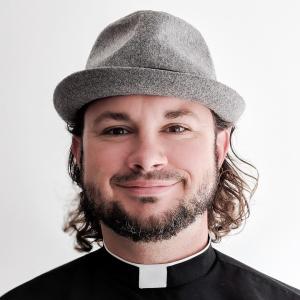
Serving as both a campus pastor and an adjunct instructor, I know that web-based teaching can feel disconnected for the students I'm called to serve. I'm also not satisfied with this reality. Thankfully, neither are my colleagues. Together, we're learning how to better design our web-based content to move from online teaching to digital formation. Formation is teaching that is received and incorporated into the development of a student’s knowledge, skill, vocation, or identity; all formation includes teaching, but not all teaching results in formation. My desire to teach at the college level came from a yearning, even a calling, to connect with students in their critical years of identity development and vocational exploration. I want to empower them with reason, wisdom, and knowledge that they might find not just lucrative careers, but rewarding lives. In other words, I desire to teach in a way that promotes formation. Online education doesn't change that intent, but it surely changes the methods. • Relate your pedagogy to student's priorities. Many of my students now have entirely different schedules than when we were all on campus. Some are out of work entirely, while others are working twice as many hours in shipping centers and grocery stores to make up for job loss experienced by other family members. Expecting everyone to be available at the time we agreed upon when the world wasn’t in the midst of a pandemic doesn’t work with the entirely different set of priorities that have emerged for them—and for us. Adjusting some class times and providing asynchronous modules has been essential in retaining student engagement. • Reformat your office (on campus or at home) to enhance engagement. There are many content creators who have helped us think through simple logistics to make recorded and live interactions more engaging to your audience. This short and particularly helpful clip from the VlogBrothers offers some insight into space, lighting, and equipment. Helping your students see your face, hear your voice, and appreciate your context provides multiple points of connection for those on the other side of the screen. • Augment--or avoid--information dumps. Information dumps are a mixed bag. For many of our courses, a certain amount of information is essential. Many of us are used to giving that information via lectures, while others utilize activities in class that require creativity. While it’s relatively easy to record a lecture for students to watch, that doesn’t necessarily promote content retention. Youki Terada provides a helpful literature review and provides five strategies to promote increased cognitive recall. I’ve found success with two of those suggestions in particular. ◦ Peer-to-Peer engagement, a common tool in physical teaching, can still be accomplished in online learning. If meeting in a synchronous class, technology like Zoom allows educators to separate the class into smaller groups to promote discussion among peers and then return to the larger group for a report back on their discussion. In asynchronous models, additional assignments to meet outside of the lecture and reading provide students a similar opportunity. Students can record brief summaries of the conversation and send them to the instructor. This increases their repetition of the information as well as provides accountability for participation. ◦ Incorporating images with teaching helps many types of learners access an additional reference point for the essential information. I’ve had particular success utilizing a core image to guide a theme, sometimes for one class, a section, or even an entire semester. This provides a sort of touchstone, to which other selected images then relate. One hint here: too many images can become distracting and reduce student interest. I only utilize images--and, at times, videos--for major themes in any given class (usually about 3-5 per class). • Gamifying still increases engagement. My mother-in-law, Kim Conti, is a math whiz and Senior Lecturer with SUNY-Fredonia. She taught me the wonders of Kahoot, a learning platform she’s used to rave reviews in her classroom for courses like Math for School Teachers. Quizlet, another resource she commonly uses, reports that 90% of students who use it earn higher grades. These tools allow users to utilize content created by other professionals or create their own games. Initially designed for use in a physical classroom, they’re introducing new features for web-based interactions. In all of this, it’s important to remember that alternative delivery methods aren’t lesser delivery methods. We may, however, have less skill at these methods, which requires more of us to learn and employ new ways of forming our students. That, then, is the key to doing this all well. Simply taking all of our in-person content and deploying it in the easiest fashion (for us) on the web can be called online teaching, but it doesn’t necessarily promote digital formation. In periods of crisis--and indeed, in all eras of education--we ought to design courses in ways that promote true formation. The best online teaching utilizes web-based tools to create points of contact that foster digital formation. The above suggestions can enhance our practices in ways that promote digital formation through our delivery of online teaching.
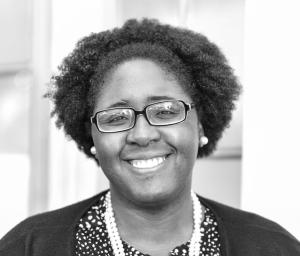
The Pandemic Amidst shelter-in-place orders and the hasty swap of physical classrooms for virtual learning spaces, it is clear that Covid-19 is being taken seriously by institutions of higher learning; daily, they are learning to re-shape themselves. Summer courses are going virtual as the duration of national isolation measures are still unknown. It is becoming more likely that a society in flux will delay the return of a “normalized” education system as distancing may continue well past the summer months.[1] Educators learn a number of lessons when thrown into pedagogical precarity and novel teaching circumstances. The first is not to master Zoom’s many features, nor protest the abrupt pedagogical transition,[2] but to closely examine what this moment reveals about their students.[3] This has been the case for me. The first week of teaching-online, the disposition of my class felt strong. Too strong. I questioned the fortitude emanating from many of them—the majority Black. I knew they were experiencing the same pandemic as the rest of the institution. Their tenacity was both admirable and alarming. Many of my students were ready to dive into the new format and keep going. This was their habit; they willed themselves to keep moving because they have always had to, because they have never had the choice of being considered “enough” to have a different response to crisis. No matter the circumstance, even a global pandemic, many had come from a culture of persistence and knew how to respond dauntlessly to tragedy. It was stitched into the fabric of how they knew how to be. The Predisposition This display of scholastic perseverance is racial, historical, unjust, and the aftershock of generational trauma. Many of my students have normalized being in a perpetual state of crisis. But the danger in this is that they rehearse how to feel and be; they do not quite let in what they actually feel, how they actually want to be in this moment. This barrier to them feeling the fullness of their personhood and humanity needs to be toppled. The truth must be named: teaching minoritized students during a pandemic is drastically different than teaching privileged ones. In my class’s case, all of my Black students had a "making a way out of no way" mentality. They assumed a pandemic could be added to the list of traumas they have experienced, witnessed, or accepted as their legacy. The idea of suffering towards one’s success has been concretized in their imagination as descriptive of what their lives should entail. Black students are used to trauma in every area of their lives, including education. Although this pandemic is significantly disrupting their lives, their mentality is to make it work, find another way, hustle, suck it up, and take it on the chin, rather than lament, rest, and most importantly, ask for the leniencies, grace, and benefits other peers are requesting. Though in class they argue passionately for equity, when it comes to tangible opportunities, many Black students do not feel it worth asking for what others are receiving; history has told them their asking is futile. This pandemic is uncovering how truly disturbing the disparities are. Historically privileged students unaccustomed to this level of stress exist on a completely different ontological plane than their minoritized peers. For them, extreme stress is the norm. For privileged students, extreme stress is a disruptor. Minoritized students adopt the “make a way out of no way” posture because hardship is not new, is not jarring. This should alarm instructors. For too many minoritized students, pandemic trauma feels no different in their bodies than the other traumas they have experienced on a normal basis. Responses from privileged peers can then be infuriating for weary-but-way-making-minoritized students. They have never had the option for an entire educational system to respond mercifully or so drastically to their fiscal, familial, or personal traumatic experiences. Mercy in the time of a pandemic, to some minoritized students, can look and feel like privilege. A Counter-Response Educators need to encourage their students who have experienced historical neglect to allow themselves to feel the weight of this moment, to not tirelessly fight through it. We must grant them permission to reimagine strength and productivity. We must grant the humane treatment they have become resentful seeing granted to others and not themselves. We must help them understand that “success” is in the fullness of feeling the moment and letting our bodies, minds, and souls react how they want. We must, in our own respective platforms, change the metrics of achievement to focus less on succeeding, and more on simply arriving.[4] Our job is to impact how our students receive information; what greater place to begin than within. [1] Ed Yong, “Our Pandemic Summer,” The Atlantic. https://www.theatlantic.com/health/archive/2020/04/pandemic-summer-coronavirus-reopening-back-normal/609940/ (Accessed April 17, 2020 [2] Rebecca Barrett-Fox, “Please do a bad job of putting your courses online,” Rebecca Barrett-Fox (blog), Accessed April 17, 2020, https://anygoodthing.com/2020/03/12/please-do-a-bad-job-of-putting-your-courses-online/. [3] Nicholas Casey, “College Made Them Feel Equal. The Virus Exposed How Unequal Their Lives Are,” The New York Times. https://www.nytimes.com/2020/04/04/us/politics/coronavirus-zoom-college-classes.html (Accessed April 17, 2020). [4] Paul Ollinger, “Your Only Goal is to Arrive,” Forge by Medium. https://forge.medium.com/to-survive-the-quarantine-change-your-metrics-e345d79be14b. Accessed April 17, 2020.
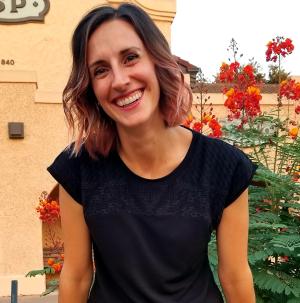
In March 2020, when colleges and universities across the United States and the world started rapidly moving all of their courses online, a few colleagues reached out to me to ask about best practices for online teaching. I have been studying online teaching and learning for over a decade and can provide links for inclusive online course design, peer-reviewed academic articles, and handy best practice takeaways. But the truth is, what we are dealing with right now is not a “best practice” scenario. Now is not the time to try to do everything you might if you had the time and mental space to plan for an online class. Nor can we act as if there wasn’t a pandemic going on. What we are doing right now is emergency remote teaching. Does anything we knew about online teaching in the before time transfer over to this crisis scenario? In a word: yes. The most important and consistent finding in all of my research has been that making real human connections with students in online classes leads to better outcomes. This is a lesson that not only still applies, but is more important than ever. Building Rapport with Students When faculty make an effort to reach out and connect with students, or build rapport with them, their efforts have a powerful impact. When a student has a positive relationship with their instructor, they are more likely to stay enrolled in the class, to earn a better grade, and, ultimately, to graduate. When it comes to online teaching, however, many institutions and faculty members spend most of their time concerned with technology and far too little on human connection. The vast majority of institutional training programs focus on mastering the Learning Management System. Even in the midst of a pandemic crisis, many faculty members are concerned about uploading professionally-edited videos or learning how to use Zoom. Being able to use technology is important, but once basic functionality is achieved, the focus should be on connecting with students. In a recent survey of thousands of students at the University of Arkansas at Little Rock, only 15% of students said that they wanted their professors to be producing interesting and engaging content right now. More than twice as many students (31%), wanted professors who were available and answered their emails. The most popular response (42%), was professors who were flexible with assignments and deadlines. Thus, I would argue that the most important thing professors can do right now to ensure their students’ success is to connect with them on a human level. Techniques for Building Rapport How can we build rapport with our students? Both long-term and short-term teaching experiments offer a few key strategies. Ask for feedback. Students want to know that you care what they think. Connect with students through a short survey or even just adding an extra question onto the next quiz. Something as simple as “What do you want to ask me?” or “What can I do to best help you right now?” sends students a signal that you care about their input. Send personal emails. Taking the time to personally reach out and check in on a student can make a world of difference. This can be time consuming, so start with the students who haven’t show up for class in a while and may be struggling. There are mail merge tools available online that can enable you to reach many students without a lot of work. Humanize yourself. If your class just moved from face-to-face to online, you already have an advantage. Your students know you are a real human being and not just a grade-generating robot. You can further humanize yourself by leaving markers of everyday life in your videos—don’t edit it out when your cat jumps on your lap or your toddler asks for a cookie. Your students may have cats and toddlers too! These moments help them see you as a real person they can connect with. Be flexible. The situation we are dealing with is not business as usual. Communicate to your students your flexibility on deadlines, adjustments you are making to the syllabus or assignments, and your understanding of what they are going through. Make sure they know that you are willing to work with them. Looking Ahead Building rapport with students is more important than ever during this crisis. But the empathy and understanding we are fostering now are attitudes we need to take with us into future classes as well. Right now, everyone is in crisis, so it is easy to be compassionate. But every semester, some of our students will experience personal crises that are at least as disruptive at Covid-19. If we make real human connections with our students, we will be ready to help them be successful in our classes no matter what challenges they face. [caption id="" align="alignleft" width="695"] Students at University of Arkansas Little Rock, photo credit: Larry Rhodes.[/caption]

When Covid-19 became a pandemic, I was not ready to make a transition to online teaching out of the blue, in the middle of the course period, but I felt a great responsibility for my students since they were going through upheavals. So, I made a 3-minute video for them and shared it through email; I encouraged them to stay safe and strong. This initial video brought a message of hope and care to them. In these tumultuous times, I see myself as pastor, theologian, and scholar. I also sent a kind, informative email to them to make sure we were all on the same page in terms of the remaining course schedule. I reached most of my students through email, but three of them did not respond for two weeks. I was anxious about them and looked for them like a shepherd who has lost a sheep. I tried to contact them every way I could: by phone, through school staff, through social media. My attempt failed. Two weeks later, they responded to me with descriptions of personal and family crisis. I was so happy that all of my students were safe. My philosophy during this time is to streamline teaching or learning, to minimize the use of technology other than that with which they are already familiar (e.g., email and the Learning Management System [LMS]). I did not ask them to learn new online skills or to set up a Zoom account. In fact, “Online Meetings” was available through our school’s LMS. All I emphasized was the importance of fast communication through email. In this traditional tech way, I maintained close contact with them and understood their individual situations. With this teaching philosophy in mind, I prepared a weekly PPT with audio narrations (like lecturing in person, unlike just reading the text) and uploaded it to our LMS, along with the new course schedule and detailed instructions. Then, the students were asked to review my PPT several times and submit a response paper to the weekly question via email. They followed my instructions very well, but some of them were struggling, so I proposed weekly online tutoring times during which I could speak with some of them online “face-to-face.” One time I had 10 students in our virtual room and talked with them about various topics they brought up. It was a good, humbling, and eye-opening experience. We felt our close community in this together. I learned how to make a podcast with a smartphone application and created podcasts for my students. I ended up making a total of 13 podcasts, each an average of 6-7 minutes. They were like songs with critical information for the week. Each podcast had its style or color with background music. My students loved them. It's an irony that this unusual environment allowed me to obtain the necessary online teaching skills which I have wanted for a long time. While virtual teaching won’t replace face-to-face meetings, in the future we may serve some “special” students who cannot make class every time. I think we may need to use hybrid courses often to maximize the student learning experience. Now I am sitting at the chair at my home and thinking about my students who are going through this pandemic. I had the joy of reading their journals of “Reading and Learning,” which is part of the required assignments. They took journaling seriously and wrote it in creative ways. Below are some excerpts: I really have to say Dr. Kim; I like the way you have really made this transition WORK! You have kept us intact with emails, weekly videos, and now the podcasts. This has been a very smooth transition; you have answered a lot of our questions and concerns on your podcasts and you have been willing to pour out to us all that you have learned over your career. I love the part where you say 'Hello, this is Dr. Kim speaking to the World!' I am so thankful for the power points because you say more than you write on the slides. I can re-listen and that’s one of the luxuries we do not get in person. In coming to class, we hear it once, and then it's off to the next thing. However, with the podcasts and blogs, it's more personal and within reach. The past two weeks your voice has become a household voice, and I do not use any headphones so when I am listening to audio. Bless you, Dr. Kim, I just wanted to give you a quick “shout out”, since we have been schooling online. I call it a pleasure to get up in the mornings and get my cup of coffee and listen to your podcasts or re-listen to your PowerPoint with audio!
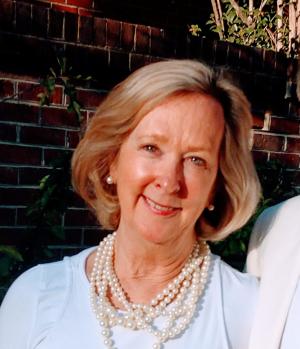
An Interview assignment is on my syllabus for my Critical Thinking and Communication class (Gen Ed, required of all sophomores, inquiry based). My course title/inquiry is "A Good Life: What is it? How does one live it?" As we pivoted to remote courses in mid-March and as I began to convert activities and assignments, I wondered about keeping the Interview. How to talk about a good life when life doesn't look so good? As it turned out, the assignment worked. I received some of the strongest, most engaging submissions I've ever read. As one student said, "We (her grandmother was the interview subject) had time together around the kitchen table. She loved my questions and she was tickled to help me with a paper. But I was the lucky one. I heard stories I had never known. And now they are recorded on my phone. What a treasure." Click this link to view the vlog.
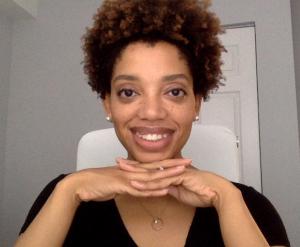
Last summer, I packed up our house, defended my dissertation, and moved to the greater New York area to begin my first tenure-track teaching position. There was nothing in new faculty orientation about teaching in a pandemic. However, I find myself drawing from my doctoral experience researching and directing a theological education program in prison as a very present help in this moment of crisis. Here is why. Teaching in prison is to teach in frequent states of crisis and disruption. It was not uncommon to hear of violent assaults or deeply unsettling “shake downs” that left the community enraged. Both of these and worse happened– and more than once. Crisis and disruption were more the norm than moments of structure and peace. I learned during those times that the most essential thing to do was to show up for class. “Showing up” is a pedagogical practice of “being with and for others” in times of crisis. In prison, that meant physically working our way through security checkpoints, gates, and locked doors so we could open physical and metaphorical doors for others. The journey to class was often filled with so many obstacles that it left us all physically and mentally exhausted. But there was an unexplainable source of energy (grace) that came when we all showed up. Showing up was how we, teachers and learners, held together a physical place where those who wanted to gather, could gather. In those times, I learned that showing up in crisis risks encountering human emotion. In crisis, the classroom can become a place where lament and laughter co-exist, weaving in and out of one another in ways impossible to control but necessary for survival. The classroom can be a space where rage gives rise to revelation … or not. I learned that emotions are an essential and expected part of processing crisis and my role as an educator is not to be a therapist or a counselor, but to bear witness. To bear witness in crisis is to be present to the confusing and unpredictable shifts between joy and anger, between light-hearted relief and soul-crushing fear, between wanting to lament and wanting to get on with the lesson of the day. This experience bearing witness to uncomfortable moments of pain, despair, sadness, and rage has, in many ways, prepared me for the present. When my University shifted to remote learning, there was the familiar question of whether or not to have class. The overwhelming response of students was yes. Showing up, even virtually, allowed us to maintain a sense of community and to be present to and with one another as gift, a balm. Students wanted a place where they could gather, listen, and be heard. I knew from my prison teaching experience that to hold a place where people could be heard in crisis was to risk exposing human emotion–and I was okay with that. As a curator of classroom experiences, I often begin with communal hearing sessions or check-ins. Sometimes I do this as a large group, sometimes in smaller breakouts. Hearing from one another does not normally take an entire class session. There were many times in the prison where I simply asked students to share one word describing how they felt as they entered class that day. At the end of class, we closed with a one-word hope for the week ahead. The ritual of hearing from one another allowed us to gauge whether we needed more time checking-in or whether we moved on to the lesson for the day. As our time in crisis extends, I find myself varying the prompts I use for communal hearing, embracing different forms of poetry, guided meditation, and music--sometimes using silence. Recently, I asked a Zoom class to sit in silence for five minutes while reflecting on an unexpected source of hope or joy from the week prior. I closed the time with a short, one-sentence prayer. Testimony, art, silence–all mediums for processing emotion, bearing witness, hearing one another, and for showing up. All mediums I grew comfortable using while teaching in prison. As a graduate student, I did not know then how much teaching in prison was radically shaping my openness to and ability to teach in moments of uncertainty and disruption. I suspect teaching in this crisis will have a similar life-altering effect. How do you hope teaching in this crisis will radically shape your teaching for years to come?
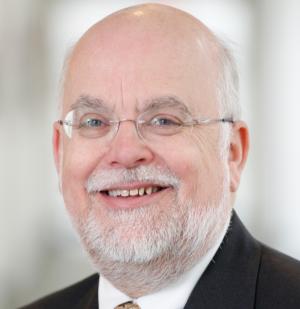
As everyone moved to online teaching and learning in mid-March, our faculty and students made the leap of faith onto various platforms. Faculty had to get ready over a weekend for synchronous teaching via Zoom (including Shabbat on which technology is not commonly used) so that the following week, fulltime ordination students would have their regular classes available (including our daily Beit midrash [collaborative exegesis seminar] and daily prayer). There was technology to set up, faculty to train on the technology, as well as the individual concerns and varieties of teaching. Students needed to be directed and advised, not to mention the current asynchronous online students on a different platform. These students were used to online learning, but now had children and work responsibilities at home and were separated from their usual equipment, resources, and books. In addition, a wonderful rabbinic colleague had just passed away from Covid-19 leaving a bereft family and congregation. It was a massive effort that week, so you can imagine how I felt at the end of that week when a faculty member suggested we offer a community-sustaining opportunity for our educators and students. She envisioned bringing people together, lowering the frenetic atmosphere, and offering pedagogic and spiritual resources to those who were leading their own institutions. It took some persuading, but gathering my last ounce of energy, I saw the wisdom of her proposal and agreed to teach the first session on the Monday before Passover. Knowing that Passover was about to commence for our community gave us that extra impetus to offer a message of comfort, hope, and promise of liberation to those who would be working through the holiday season. Come Monday morning, we commenced with a simple Hinneni–‘Here I am’ like Moses at the burning bush in the wilderness. It was a wonderful opportunity to connect and breathe together as colleagues, fellow Jewish educators, and students. Then I taught the midrash of the four children of the Passover Haggadah reminding everyone that the midrash is based on four hypothetical biblical children’s questions, three of which (the wayward, willing, and wondering) come before the event of the Exodus in chapter 13. Their questions of uncertainty and anxiety are the same questions we have about our current situation and they need response from our spiritual resources of hope and healing. The fourth biblical child (wise) comes to ask his/her question once the whole experience is over. A reflection on experience, the question (derived from a verse in Deuteronomy 6), requires we respond in a different theological way, as does the Deuteronomist. That learning was followed by a colleague inviting participants to reflect together about our questions of uncertainty. This colleague used the framework of the Gibbs cycle of reflective action--encouraging the expression of feelings around decision-making and personal and professional circumstances. It was a cathartic experience for the participants and it lifted the burdens upon us. Now we were a community of educators looking to each other and to our tradition of text and ritual for sustenance and healing. All my hesitations about this additional time online fell away as I realized that this was probably the most important spiritual solace we had had all week. We were also modelling a pedagogic practice for the participants to emulate with their own communities. After 75 minutes, we had a final moment of nehemta–a concluding spiritual expression of hope. One of our cantorial students introduced a piece of modern liturgical music by saying, “This is for you, our teachers who are on the front line of providing essential spiritual service.” The words of Debbie Friedman, beloved Jewish singer songwriter, melodiously flowed from his guitar: For our teachers and their students And for the students of their students We ask for peace and lovingkindness, and let us say: Amen. And for those who study Torah here and everywhere May they be blessed with all they need, and let us say: Amen. It was tranquil, contemplative, and uplifting. It was a selection (Kaddish de’Rabbanan) that traditionally marks a culmination of Torah study or the death of a Torah scholar. This time it did both. We then bid each other goodbye as we unmuted and wished each other a ‘fulfilling Pesach of enacted freedom.’ I very quickly wrote to my colleague, “Brilliant! When are we doing the next one!” “For our teachers” is now a biweekly webinar, an act of hope in a time of uncertainty.